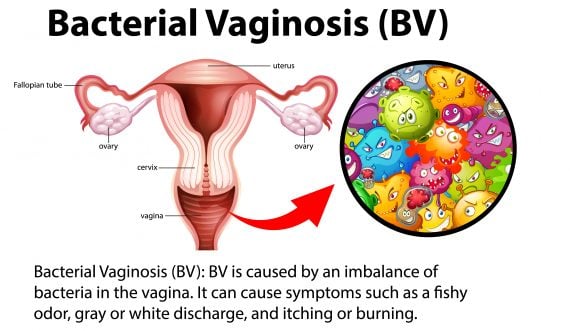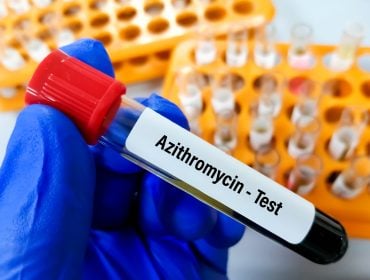Gardnerella Vaginalis
Overview | Symptoms | Causes | Prevention and treatment
What is Gardnerella Vaginalis?
Gardnerella vaginalis is a type of bacteria commonly found in the vagina. While it is a normal part of the vaginal microbiome, an overgrowth of Gardnerella vaginalis can cause a medical condition known as bacterial vaginosis (BV). BV is an extremely common vaginal infection that affects women of reproductive age and is characterized by a disruption of the natural balance of bacteria in the vagina. This can lead to symptoms such as unusual discharge, odor, and itching, which can be uncomfortable and embarrassing for those affected. Check out our article, Is BV an STD?
In this article, we will discuss Gardnerella vaginalis in more detail, including how it contributes to the development of bacterial vaginosis, what symptoms to look out for, and how it can be treated. We will also explore ways to prevent the overgrowth of Gardnerella vaginalis and maintain a healthy vaginal microbiome. If you are experiencing symptoms of BV or are concerned about your vaginal health, read on to learn about Gardnerella vaginalis and how to address this common issue.
The symptoms of Gardnerella vaginalis are closely associated with bacterial vaginosis (BV), the condition that results from the overgrowth of this bacteria in the vagina. While some women with BV may not experience any symptoms at all, others may notice the following:

Gardnerella Vaginalis Symptoms
- Unusual discharge: A thin, gray-white discharge that may have a strong, unpleasant odor is a common symptom of bacterial vaginosis.
- Vaginal Odor: The discharge associated with BV is often accompanied by a noticeable odor, which may be described as “fishy” in nature. Vaginal odor page.
- Itching or burning: Some women with BV may experience itching or burning around the vulva or inside the vagina. What is vaginal itching?
- Painful urination: In some cases, BV can cause discomfort or pain during urination.
Asymptomatic Gardnerella Vaginalis
It is possible to have Gardnerella vaginalis in the vagina without experiencing any symptoms. This is known as asymptomatic Gardnerella vaginalis, and it is relatively common. However, just because there are no symptoms present does not mean that an overgrowth of this bacteria cannot lead to complications.
Asymptomatic Gardnerella vaginalis is often the precursor to bacterial vaginosis (BV), which can cause uncomfortable symptoms and lead to other medical issues if left untreated. Therefore, it is crucial for women who are at risk of developing BV (such as those who are sexually active or have recently taken antibiotics) to monitor their vaginal health and seek treatment if necessary.
While some healthcare providers may recommend treating asymptomatic Gardnerella vaginalis to prevent the development of BV, others may take a more cautious approach and only recommend treatment if symptoms arise.
What Causes Gardnerella Vaginalis
The exact causes of Gardnerella vaginalis overgrowth in the vagina are not fully understood. However, there are a few factors that may contribute to its development. These causes of Gardnerella vaginalis include:
- Disruption of vaginal pH: The vagina has a naturally acidic pH level that helps to maintain a healthy balance of bacteria. When this pH level is disrupted (often due to douching, menstrual bleeding, or semen), it can create an environment more conducive to Gardnerella vaginalis’s growth.
- Sexual activity: While Gardnerella vaginalis is not considered a sexually transmitted infection, it can be spread via sexual activity. Sexually active women, especially with multiple partners, are at a higher risk of developing bacterial vaginosis.
- Antibiotics: Their use can disturb the balance of bacteria in the vagina and increase the risk of Gardnerella vaginalis overgrowth. This is because antibiotics can kill off harmful and helpful bacteria, allowing opportunistic bacteria like Gardnerella vaginalis to take over.
- Hormonal changes: Changes in hormone levels (specifically those which occur during pregnancy or menopause) can alter the vaginal environment and increase the risk of bacterial vaginosis.
- Poor hygiene: Practices such as wiping from back to front after using the bathroom or using scented products on the genitals can also disrupt the vaginal microbiome and can inflate the risk of Gardnerella vaginalis overgrowth.
It is important to note that not all women who are exposed to these risk factors will develop bacterial vaginosis or Gardnerella vaginalis overgrowth. The development of BV is a complex process that is still not fully understood.

Is Gardnerella Vaginalis an STD?
We are an STD Testing company, so logically, it is our goal to be a resource for all STD-related questions. So, is Gardnerella Vaginalis an STD? Gardnerella vaginalis is an infection of the urogenital tract that is clinically important in females and of epidemiological significance in males. No, Garnerella Vaginalis is not an STD. It is not considered a sexually transmitted infection (STI) either, but it can be passed from males to females during intercourse. The infection it causes, bacterial vaginosis, has symptoms similar to an STI. Having Gardnerella increases the risk of getting an STD, as it can create an imbalance in the vagina, which leads to a condition known as bacterial vaginosis (BV).
Prevention and Treatment Strategies for Gardnerella Vaginalis
Prevention of Gardnerella Vaginalis infection includes:
- Avoiding douching.
- Using condoms during sexual intercourse.
- Limiting the number of sexual partners.
Additionally, it is important to have good hygiene by cleaning the genital area with lukewarm water and avoiding any soaps or cleansers that can disrupt the balance of bacteria in the vagina.
When it comes to treatment, metronidazole 500 mg orally two times a day for seven days is recommended by the Centers for Disease Control and Prevention (CDC). Metronidazole gel 0.75% one full applicator (5 g) intravaginally should also be applied once a day for five consecutive days. The CDC recommends against using any form of nonoxynol 9 for STD prevention.
It is important to note that if symptoms persist after treatment, it may be necessary to seek medical advice from a healthcare provider, as other infections may be present.
Understanding the Difference Between Gardnerella Vaginalis and Bacterial Vaginosis (BV)
Gardnerella Vaginalis and Bacterial Vaginosis (BV) are often mentioned together in discussions about vaginal health, but they are not the same thing. Understanding the distinction between these two is crucial for proper diagnosis and treatment. In this article, we delve into what sets Gardnerella Vaginalis apart from BV and how this knowledge can guide effective management and prevention strategies.
What is Bacterial Vaginosis? Bacterial Vaginosis, on the other hand, is a condition resulting from an imbalance in the vaginal microbiome. It’s characterized by the overgrowth of certain bacteria, including Gardnerella Vaginalis. BV is the most common vaginal infection in women of reproductive age and is marked by symptoms like unusual discharge, odor, and itching.
Key Differences
- Causative Agent vs. Condition: Gardnerella Vaginalis is a bacterium, whereas BV is a condition caused by an imbalance of vaginal bacteria, including Gardnerella.
- Symptoms: While Gardnerella Vaginalis may not always cause symptoms, BV typically presents with a distinct set of symptoms like a fishy odor and grayish discharge.
- Treatment: Addressing Gardnerella Vaginalis involves targeting the bacteria specifically, whereas treating BV requires restoring the overall balance of the vaginal microbiome.
Summary of Gardnerella Vaginalis and STDs
Gardnerella Vaginalis is an anaerobic bacterium that can cause bacterial vaginosis (BV). It is not considered a sexually transmitted disease, but it can be caused by sexual activity. It is the most common cause of abnormal vaginal odor and discharge. Gardnerella Vaginalis is usually found in the vagina with a mixed anaerobic microbiota, and its presence can lead to urologic and gynecologic infections.
Takeaways
Gardnerella Vaginalis is a type of bacteria that can cause bacterial vaginosis, which is not considered an STD but can be caused by sexual activity. It is important to recognize the signs and symptoms of BV to treat it quickly and effectively. Additionally, understanding the causes of BV can help prevent it from occurring in the first place.
Medically Reviewed by Julie Hutchinson, MD on May 21, 2023
Secure and Confidential
STD testing services
The fastest results possbile - available in 1 to 2 days

Tagged
Categorized As
Author: STD Check Editorial Team
At STDCheck.com, we go to great lengths to ensure quality content. We’re using our own collection of data. It is not bought or made up for “click-bait” purposes. We don’t entice traffic with cheesy graphics or raunchy headlines. Our information is to promote STD testing, educate people, let go of social stigmas, and bring awareness. We also provide a completely confidential atmosphere through private testing. When we produce an article, it is fact-based. We check it with medical advisors that approve it. Our staff consists of doctors and other medical professionals who peer review the content we make available on STDCheck.com. From all over the world, we have sourced the best and the brightest content developers, including medical professionals, marketing engineers, data scientists, content specialists, and media relations.




